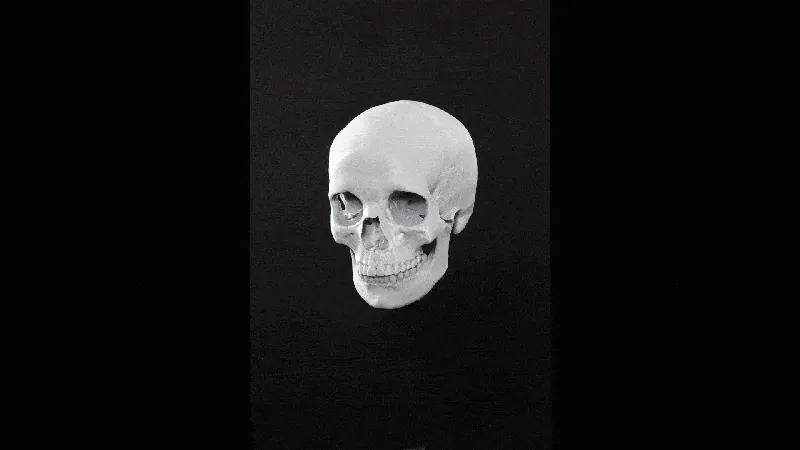
Unveiling the 'Vampire' from History: New Insights into the Life and Death of a Young Woman Buried with a Blade Around Her Neck
2024-11-26
Author: Jessica Wong
The Discovery
In a haunting revelation from centuries past, archaeologists have unearthed the remains of a young woman, treated as a "vampire" by her community and buried with an unusual lock and blade configuration. This fascinating reconstruction offers a glimpse into her life and the cultural practices that led to such a burial in 17th century Poland.
Background
The woman, likely hailing from a wealthy Scandinavian family, was found in Pień, a small village, during excavations in 2022. Chemical analysis of her remains indicates a Scandinavian origin, while her skeletal evaluations reveal the presence of multiple debilitating health issues, including a painful cancer afflicting her sternum.
Archaeological Findings
Oscar Nilsson, a forensic artist from Sweden responsible for recreating her likeness, explained the unique burial practices that reflected the community’s fear of the deceased. The sharp blade of a sickle was placed over her neck, complemented by a padlock secured around her left big toe. These measures were emblematic of local folklore, which warned that if a person's "good soul" departed, the "bad" could dominate—a transformation into a terrifying creature known as a 'striga', akin to a vampire.
Cemetery Insights
Moreover, archaeological findings show that approximately one-third of the burials in this cemetery were categorized as "deviant." This term often encompasses those viewed negatively by society—suspected criminals and those with physical disabilities, among others. The idea behind such burials was often to ensure that the individual would not rise after death, with protective items like stones and padlocks frequently accompanying the graves.
Social Status
Despite her marginalized burial, evidence suggests this young woman belonged to a wealthy lineage. Artifacts such as remnants of a silk bonnet and a gold brocade ribbon were uncovered, indicating her high social status. Textile expert Maria Cybulska confirmed that the ribbon style dates to the tumultuous Thirty Years' War period (1618-1648), hinting at the elite social circle she may have been part of.
Reconstruction Efforts
Nilsson collaborated with Anna Silwerulv from the Vasa Museum in Stockholm to create a historically accurate portrayal of her attire, reflecting her noble heritage. Standing between 5 feet 4 inches (162 cm) tall and estimated to be about 18 to 20 years old at her death, her skeletal analysis also revealed additional health issues.
Health Challenges
Kimmerle's anomaly, a condition that can induce severe headaches and fainting spells, alongside evidence of childhood malnutrition, paints a picture of a young woman whose life was filled with challenges both in health and social acceptance.
Artistic Reconstruction Process
Using her skull as a base, Nilsson calculated the reconstruction's tissue depth and muscle structure, employing pigmented silicone for her skin and even real human hair for authenticity. Through this intricate work, he aimed to present her not as a feared "monster" of folklore but as a young woman who deserved compassion and dignity in life and death.
Empathy and Reflection
Nilsson expressed sorrow for her plight, emphasizing the need for empathy towards individuals who may have been misunderstood or marginalized by society. "She needed medical help but instead was treated as something dangerous. I wanted to restore not only her face but also her human dignity," he remarked.
Conclusion
As historians and archaeologists continue to uncover and understand the mysterious past, the story of this young woman reminds us of society's complexities and the often tragic narratives hidden beneath the earth. What other secrets from the past are waiting to be uncovered? Stay tuned for more astonishing discoveries!




 Brasil (PT)
Brasil (PT)
 Canada (EN)
Canada (EN)
 Chile (ES)
Chile (ES)
 España (ES)
España (ES)
 France (FR)
France (FR)
 Hong Kong (EN)
Hong Kong (EN)
 Italia (IT)
Italia (IT)
 日本 (JA)
日本 (JA)
 Magyarország (HU)
Magyarország (HU)
 Norge (NO)
Norge (NO)
 Polska (PL)
Polska (PL)
 Schweiz (DE)
Schweiz (DE)
 Singapore (EN)
Singapore (EN)
 Sverige (SV)
Sverige (SV)
 Suomi (FI)
Suomi (FI)
 Türkiye (TR)
Türkiye (TR)